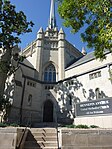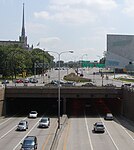Northwestern National Life Insurance Company Home Office
Beaux-Arts architecture in MinnesotaBuildings and structures in MinneapolisCommercial buildings completed in 1924Financial services companies established in 1885Life insurance companies of the United States ... and 2 more
National Register of Historic Places in MinneapolisOffice buildings on the National Register of Historic Places in Minnesota

The Northwestern National Life Insurance Company Home Office, was also known as the Loring Park Office Building, and is now a 75 unit boutique apartment complex known as 430 Oak Grove located in Minneapolis, Minnesota. It was designed by the architecture firm of Hewitt and Brown in the Beaux-Arts style as the headquarters of the Northwestern National Life Insurance Company. The building was listed on the National Register of Historic Places on July 16, 2012.
Excerpt from the Wikipedia article Northwestern National Life Insurance Company Home Office (License: CC BY-SA 3.0, Authors, Images).Northwestern National Life Insurance Company Home Office
Oak Grove Street, Minneapolis
Geographical coordinates (GPS) Address Phone number Website Nearby Places Show on map
Geographical coordinates (GPS)
| Latitude | Longitude |
|---|---|
| N 44.968055555556 ° | E -93.285833333333 ° |
Address
St. Mark's Episcopal Cathedral
Oak Grove Street 519
55403 Minneapolis
Minnesota, United States
Open on Google Maps









